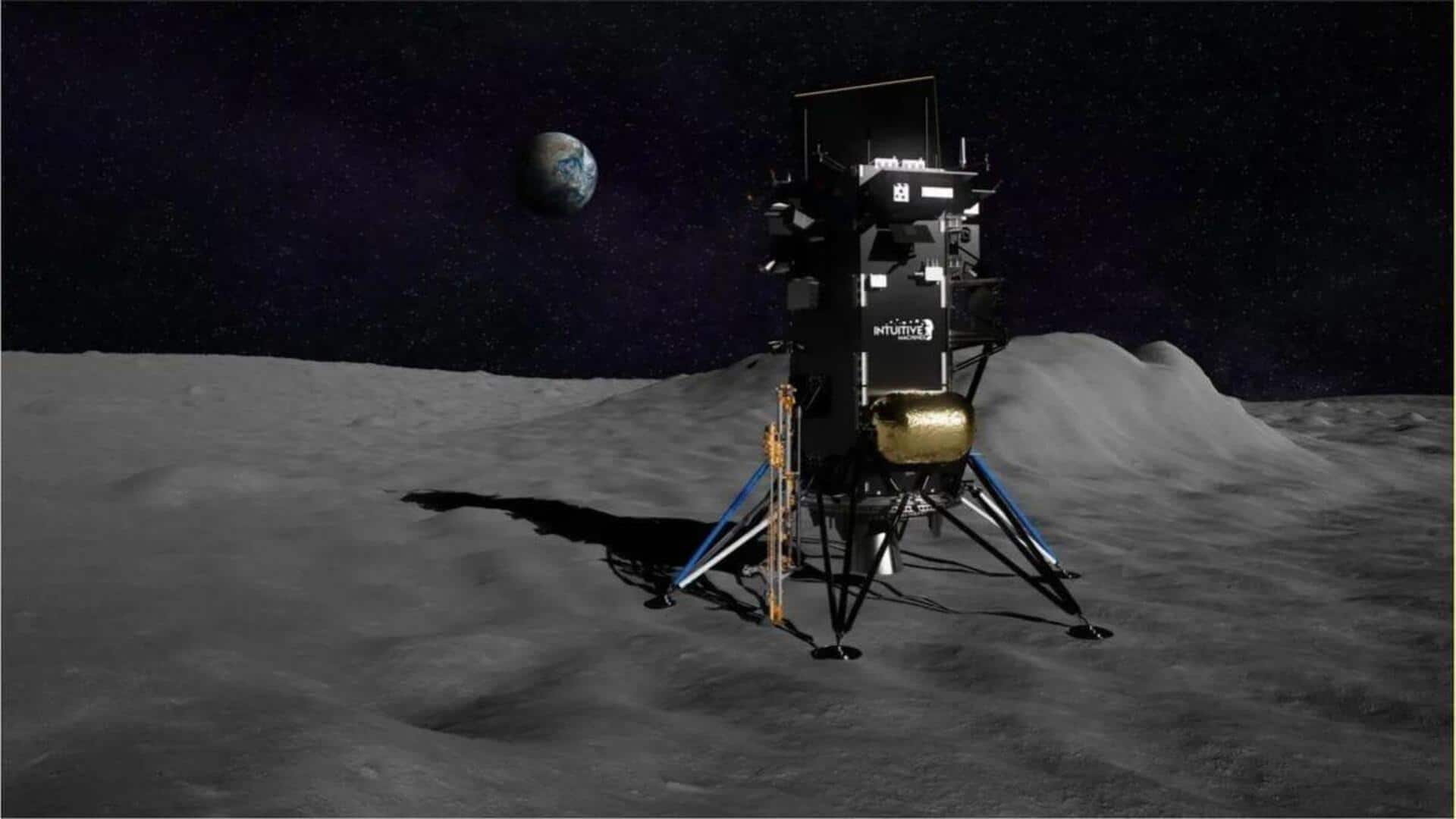
NASA-backed lander touches down on Moon but remains offline
What's the story
Intuitive Machines, a US-based private aerospace company, successfully landed its lunar lander, Athena, on the Moon. The spacecraft touched down near the south pole of our natural satellite. However, as time passed after the landing, flight controllers were unable to confirm its condition or whether it was even upright. This isn't the first time Intuitive Machines has faced such an issue; their previous lunar landing also resulted in a sideways position for their craft.
Mission details
Athena's journey and mission objectives
Athena was launched last week, carrying an ice drill, a drone, and two rovers for NASA and other organizations. The descent to the lunar surface took about an hour and seemed to go smoothly. However, nearly half an hour after touchdown, Intuitive Machines' team could not confirm if everything was alright with the 15-foot tall lander. Despite this setback from last year, when their first lander tipped on its side after landing on the Moon in February 2024.
Landing details
Athena's landing location and challenges
Athena aimed for a mountain plateau just 160km from the south pole, much closer than its predecessor. However, mission control visibly tensed as time passed after the scheduled landing. Twenty minutes past the planned touchdown time, company spokesperson Josh Marshall announced on a webcast: "Athena is on the surface of the Moon." Despite the confirmation, teams were still analyzing incoming data to determine the lander's status and were attempting to retrieve an image.
CEO comments
CEO's statement on lander's orientation
Intuitive Machines' CEO Steve Altemus said at a press conference that they don't think they're in the right attitude, an aeronautical term for orientation. He added this imperfect positioning could restrict the mission due to suboptimal power generation and communications. The company's share price tumbled 20% in afternoon trading after these revelations. The high center of gravity of Athena, like its predecessor Odysseus, has raised stability concerns due to its tall, slender build.
NASA collaboration
NASA's Commercial Lunar Payload Services program
Both Athena and Firefly Aerospace's Blue Ghost lander, which successfully touched down on the Moon last Sunday, are part of NASA's $2.6 billion Commercial Lunar Payload Services (CLPS) program. The initiative seeks to tap private industry to cut costs and aid Artemis - NASA's bid to return astronauts to Moon and eventually Mars. The mission plans to deploy cutting-edge payloads including a drill for ice detection, a 4G cellular network test, three rovers, and a unique hopping drone named Grace.